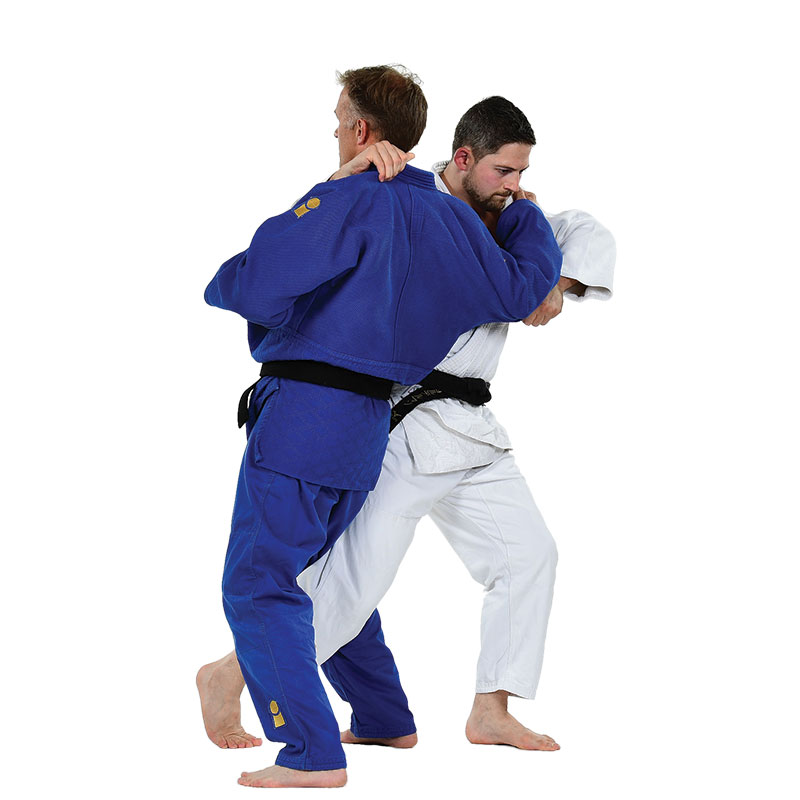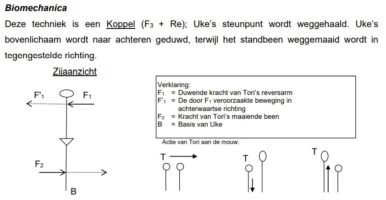O-soto-otoshi 大外落
Major Outer Drop
Classification: Ashi-waza (leg technique)
Japanese meaning:
-
Ō = large
-
Soto = outer
-
Otoshi = drop
Technical Description
O-soto-otoshi is a leg technique included in the Habukareta Waza, the preserved techniques of Kodokan Judo. It closely resembles O-soto-gari in setup and grip, but differs in execution.
Rather than reaping uke’s leg out from underneath, as in O-soto-gari, tori instead:
-
Lifts the right leg high,
-
Swings it down from the outside and above behind uke’s right leg,
-
And forces uke down to the tatami in a powerful dropping motion.
The throw exploits uke’s disrupted balance by pressuring both upper and lower body simultaneously, causing uke to collapse backward in a straight line.

Biomechanics of O-soto-otoshi
This throw functions through a couple (koppel) of forces (Re + F3):
-
F3 (Leg force): Tori steps deep behind uke’s base, lifting the leg high and then driving it downward behind uke’s leg.
-
Re (Upper body force): At the same time, uke’s torso is pushed backward, removing their ability to recover balance.
-
This combination removes uke’s base of support, causing them to fall heavily backward in a dropping motion, rather than being swept off their feet.
Unlike O-soto-gari, which involves a continuous reaping motion, O-soto-otoshi applies more vertical pressure from above to force uke down.

Did You Know?
O-soto-otoshi is the fourth technique of the sixth group (Habukareta Waza) of the Gokyo no Waza, the preserved classical throws formalised by Jigoro Kano in 1895.
The Habukareta Waza are a collection of techniques that were once part of the official syllabus but later removed from mainstream practice, often due to their complexity or limited use in randori. However, their technical richness and historical value make them essential for advanced judo study.